Jeans Sew-Along: Gathering Materials

Today we begin the sew-along for our Quadra and Fulford men's jeans patterns! I'll be walking you through the following topics with the help of many diagrams and photos:
Today (Oct 12th) - Gathering Materials - how to choose fabric and notions.
Oct 19th - Choosing a Size - how to measure the man and select an appropriate pattern size. We'll also discuss options to mock up your chosen size and how to make alterations to ensure a good fit.
Oct 21st - Set up and Patch Pockets - how to set up your machine, apply interfacing, and assemble the patch pockets.
Oct 23rd - Front Pockets - how to construct the french seamed pocket bags.
Oct 25th - Yoke, Inseams and Side Seams - how to sew these flatfell seams and the side seams.
Oct 27th - Seat seam and Fly Extension - how to prepare for fly construction by sewing the seat seam and adding on the fly extension.
Oct 29th - The Fly - I've taken loads of photos for this step and I know you can do it!!!
Oct 31st - Waistband - We'll add the waistband on and discuss additional fitting options at this point.
Nov. 2nd - Belt loops and Finishing Details - how to assemble the belt loops, hem the jeans and apply the rivets.
You'll notice that the sew-along schedule will give you a week to get your materials assembled and then we can delve into fitting and sewing. Before we talk about materials, though, I want to give you a little bit of inspiration by showing you some of the amazing Quadra Jeans that our test sewers made!
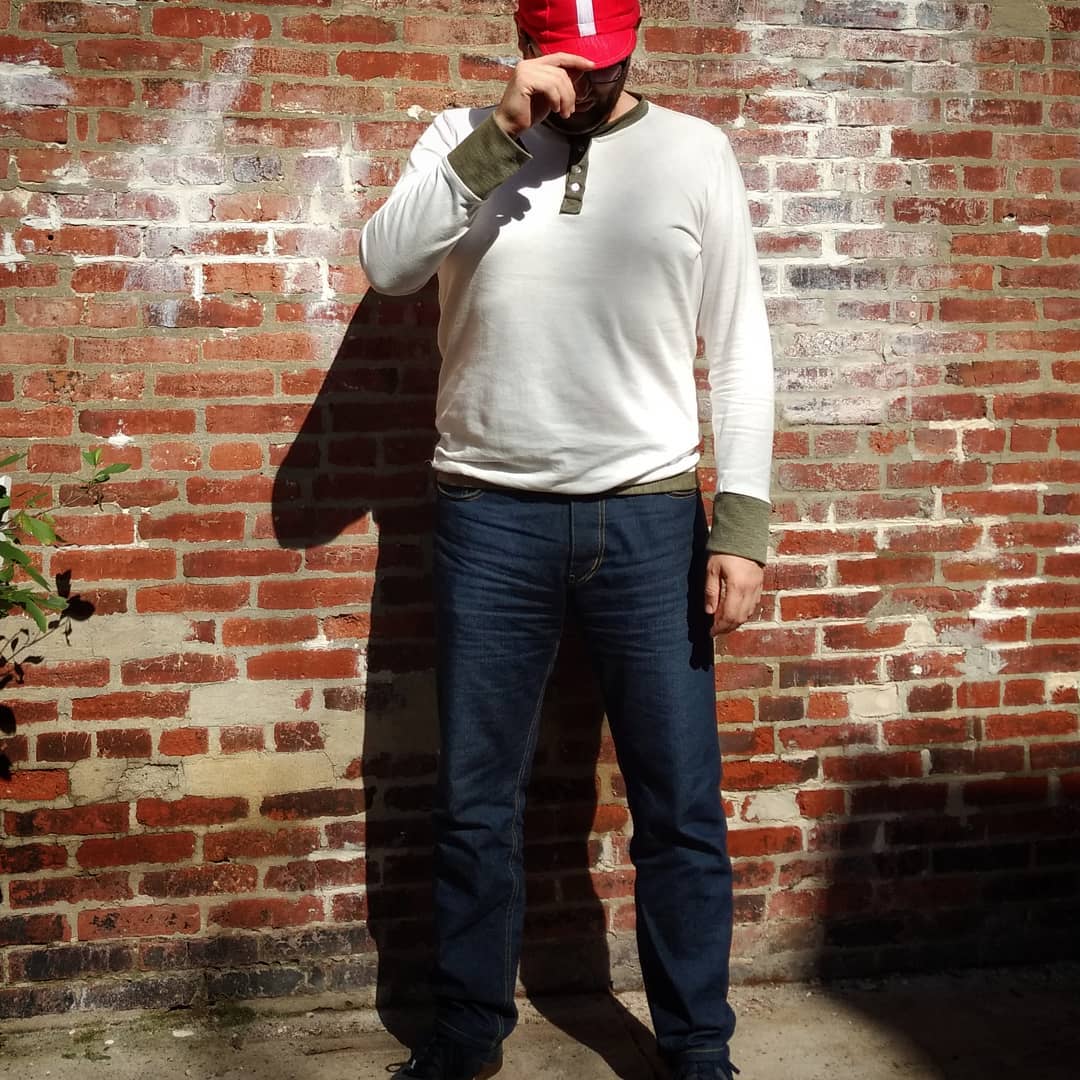
This nicely fitted pair was sewn by Dan for himself - notice how he's paired them with a Strathcona Henley!

Tina really took her time and added thoughtful details to the pair that she sewed. I love the idea of adding a label on top of the leather patch!

Kari sewed this pair for her partner, the dark fabric choice looks very smart paired with a button-up.

And lastly, Zak sewed this Carhartt-colored pair for himself and took lovely photos at Hadrian's Wall in the UK. I travelled to view this wall many years ago when visiting family who live in Manchester so his photos bring back some great memories!
Are you itching to make your own pair now? Let's begin by assembling our jeans-making materials! Looking at the Materials Required section of the instruction booklet, you will see that you need the following:
Self Fabric
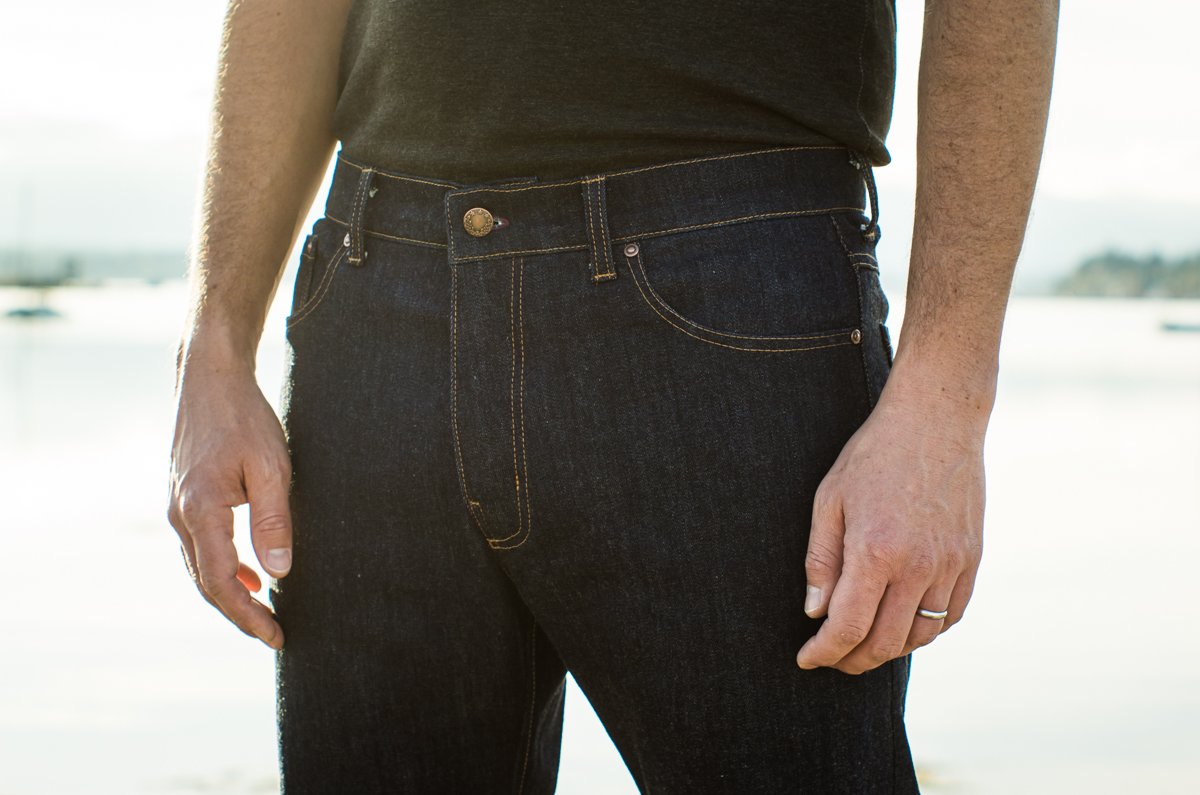
This is the main fabric you will use for the jeans. Denim is, of course, recommended, but the jeans look great in a myriad of other fabric choices as well! Try making a wearable mock-up in a readily available cotton twill, corduroy or canvas before investing in denim.
Denim can be tricky to source and can be fairly expensive when you purchase denim of high quality. Fortunately, our jeans patterns can be made using a fairly wide range of denim styles including denim with no stretch or up to 2% elastane content. Look for denims between 9-16 oz. Ensure that your sewing machine can handle five layers of the fabric at one time using topstitching thread since this is how many layers you will be stitching when you add the belt loops to the jeans! Some excellent online sources for denim are listed below. Each link will take you directly to the part of the store where I found denim and other trouser weight fabrics.
Canada
Fabrications Ottawa - a great online shop which includes a stock of Cone Mills US-made S-gene denim in multiple weights! This is high quality denim - the same denim that continuously sells out when Closet Case Patterns launches her limited supply jean making kits!
Blackbird Fabrics - an online shop just across the water from me! Caroline often has a nice selection of denim in stock and occasionally gets in a supply of coveted Cone Mills.
Closet Case Patterns - Heather-Lou is known for her excellent women's jeans patterns. She stocks jean-making kits including all the notions you need and high quality denim. They often sell out fast but you might be in luck snagging a non-stretch kit in particular since these are less in demand than the stretch denims needed for her Ginger Jeans pattern.
Simplifi Fabric - An online shop completely focused on organic and ecologically friendly fabrics! They have a great selection of denims. The 12.5 oz Indigo Blue Hemp and Organic Cotton Denim looks spectacular!
USA
Stylemaker Fabrics - An organised selection of denim in various weights and amounts of stretch.
Britex Fabrics - They have a few very well priced Japanese selvage denims that are worth a peruse!
Fancy Tiger Crafts - A nice array of denims from various manufacturers - all well labelled so you can compare the differences. I like the US made bull denim choices in particular. Bull denim is dyed after weaving to produce a uniform colour (whereas regular denim features an indigo warp thread and white weft thread).
Harts Fabric - A comprehensive selection of quite affordably priced denims. I especially like the look of the wide denim which would save a lot of fabric when cutting out men's larger sizes.
UK
Merchant & Mills - A large range of high-end denim very suitable for men's jeans - you might like to make a mock up first due to the price point of these quality fabrics!
Empress Mills - Some very affordable denims in a variety of weights. A great way to test out a pair of jeans without a huge investment!
Croft Mill - Another selection of affordable denims and some interesting choices including prints, pre-washed, broken twill weave, extra wide etc.
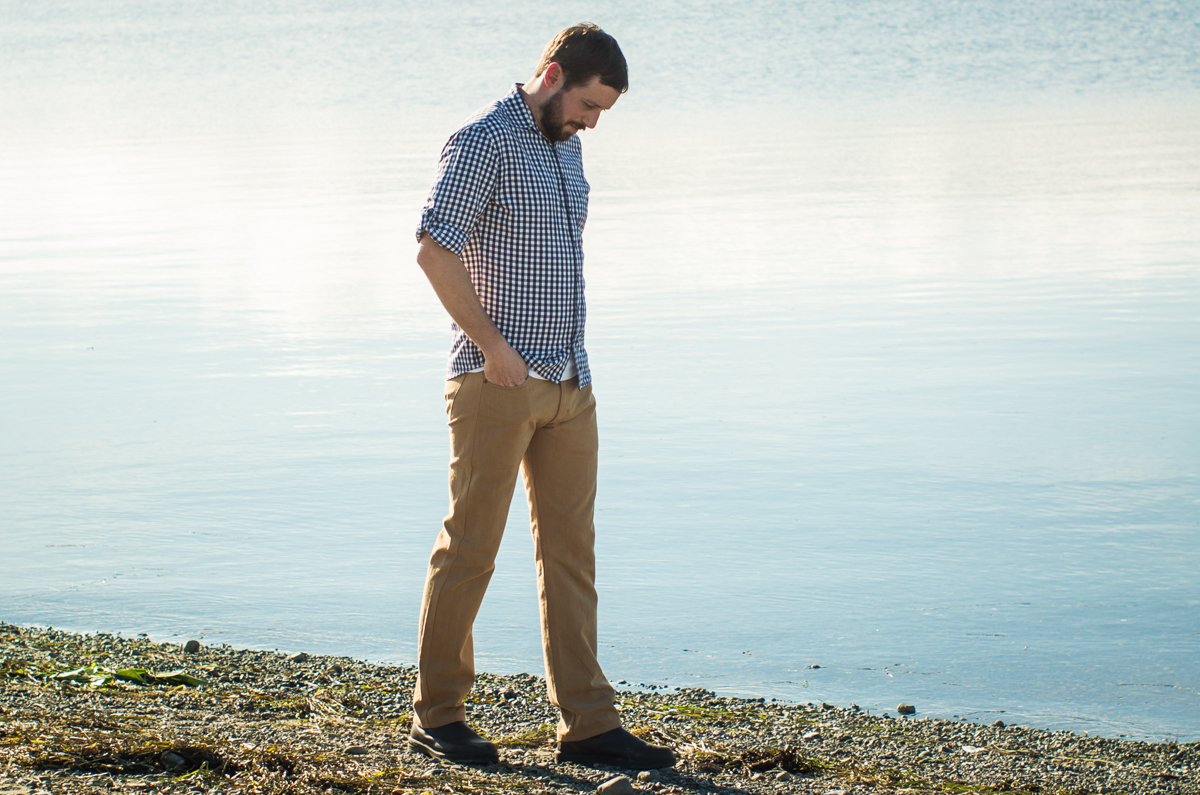
Like I mentioned before, if you would like to try out one of our jeans patterns before cutting into your high-end denim, why not sew up a pair in a more affordable cotton twill or corduroy? You'll likely find a selection of trouser weight materials at your local fabric shop but, in case you don't have a shop near you, here are some excellent online options:
Blackbird Fabrics - Currently there is a nice 8.5 oz Cotton Chino Twill in stock in various colors. While this is half an ounce lighter than I recommend within the instruction booklet, it would make a great jean alternative for summer and it would be nice to practice topstitching on something a bit more light weight.
Stylemaker Fabrics - A US based online shop - there is no end to the options here! You can search their "Pants" section and browse many pages of corduroy, twill, bull denims in many colors, suitings of all sorts and more.
RayStitch - A UK based online shop with a large selection of interesting fabrics. I enjoyed perusing the Heavier Weight Wovens sections for all sorts of unique options for pants.
Pocket Lining

This is a great opportunity to use a scrap of fun quilting cotton but any strong and thin cotton or cotton blend will work nicely. Above you can see a beautiful Jedediah Pants progress shot by Duane of MainelyMenswear. He's chosen a kente cloth print for his Jeds. Similar accent fabrics can be used for our jeans patterns.
Have a look at store bought jeans and you will see the pocketing is actually quite thin. I usually prefer a quilting cotton weight so that the pocket bags are not a weak point in terms of wear. I've also used scraps of shirting from past Fairfield Button-ups and scraps of flannel from past Eastwood PJS (shown below) with great success!

Interfacing
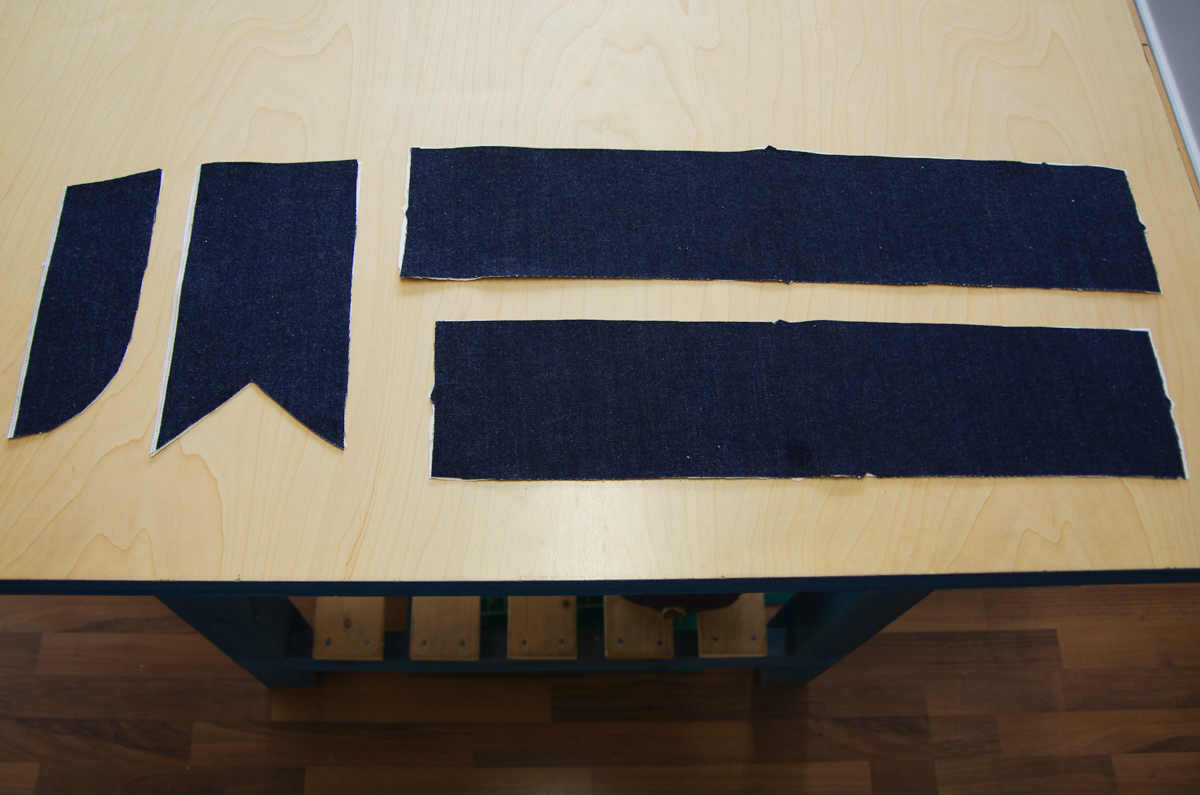
Choose a medium weight fusible that adheres to your denim or chosen self fabric securely. The interfacing will be used for the Fly Extension, Zipper Shield and Waistband Pieces. It can be black or white since thick denim will not allow the interfacing to show through to the right side!
Other Supplies

A no-sew jeans button measuring 1/2"-1". We stock several types of jeans buttons in our shop.
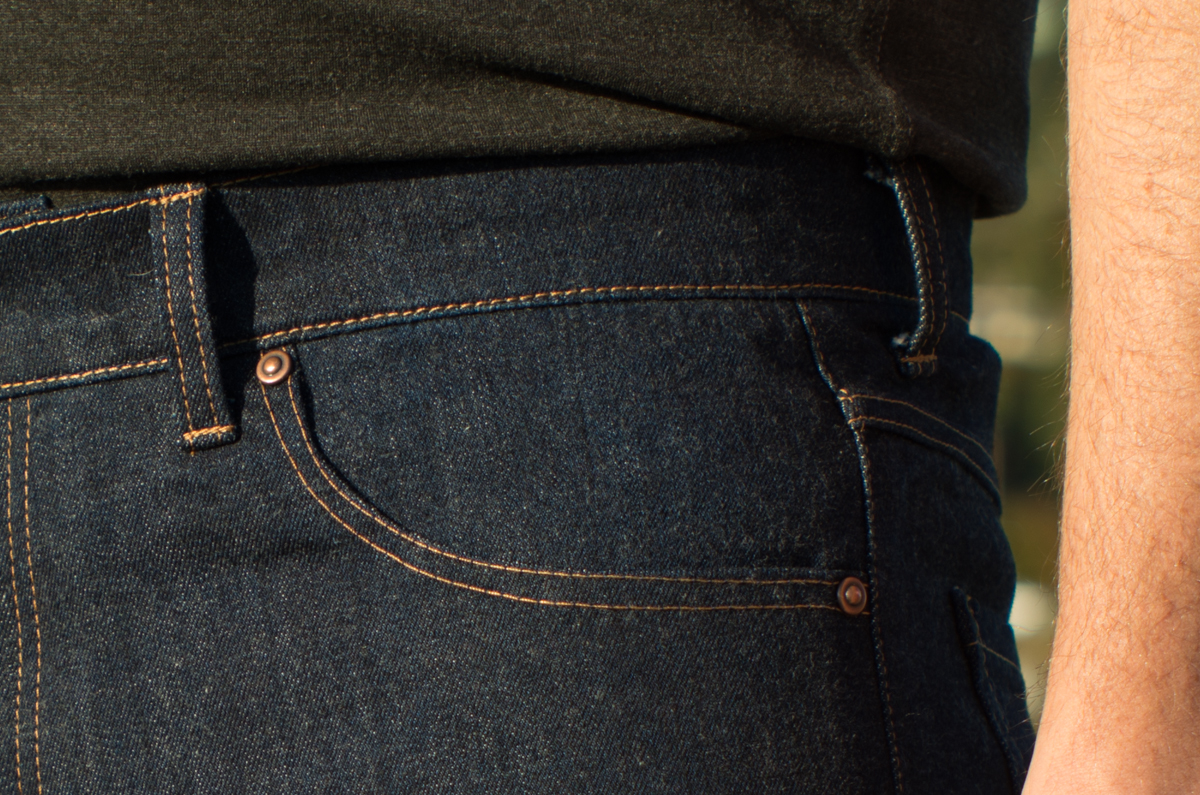
Six pocket rivets - these are optional if you are using a fabric other than denim since you could also just bartack very securely at these pressure points but I don't think rivets are optional if you are sewing with denim. They are essential to create the classic strength and appearance of jeans. We have several types of rivets in our shop as well.
Thread - you will need regular polyester thread (which is stronger than cotton) to match the colour of your denim and thicker topstitching thread in a pleasing contrasting colour. Some of our test sewers successfully sewed their entire jeans using Gutermann Extra Strong Thread which is not quite as thick as topstitching thread. This allowed them to skip the hassle of re-threading their machine each time they needed to topstitch. My machine is never very happy when sewing with thick thread (it binds up when I backstitch) so I prefer to switch back and forth to ensure that my seams are strong and backstitched securely before I topstitch them. We will be discussing all sorts of tips and tricks for tidy topstitching later on in the sew-along!

An optional 3 X 2 1/2" decorative label - Most store bought jeans feature a leather-like label on the back waistband. I love adding my own blank label as a way to draw attention to the fact that my jeans are not branded! You can stitch a real leather label to your jeans or you can add a washable paper one. We carry these in our shop for $2 CAD. They are comprised of the same material that brands like Levis or Wrangler uses for their labels - this washable paper stands up to machine washing and drying at any temperature.

A metal toothed zipper - if you can not find the size recommended in the instruction booklet, a longer zipper will do just fine! I will be showing you how to shorten the zipper during the sew-along. We carry 7" and 8" jeans zippers in our shop. Oh, and don't be concerned about the width of the zipper tape! The pattern pieces are marked so that you will be able to place your zipper correctly regardless of the width of your zipper.
Before we continue with the sew-along, make sure to pre-wash your denim. I recommend washing it with a cup of vinegar on fairly high heat to set the indigo dye and pre-shrink/pre-soften the denim...unless, of course, you are a denim enthusiast who wants to sew up a pair of raw denim jeans! In that case, you'll want to keep them stiff and saturated with dye by avoiding washing at all! You can read about that whole philosophy here (be prepared to be lost down a bit of a rabbit hole!).
